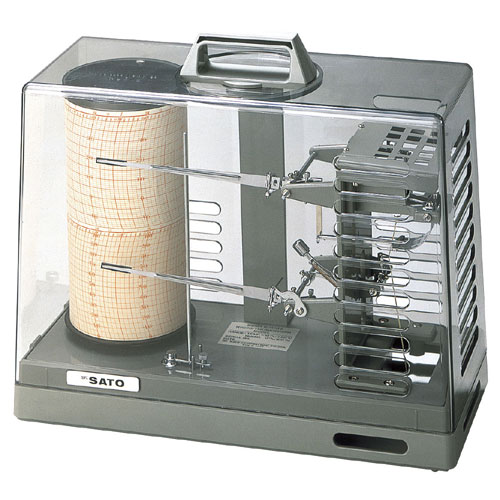
Details on the selection and use of self-recording thermometers and hygrometers in measurement and comparison between self-recording thermometers and data storage
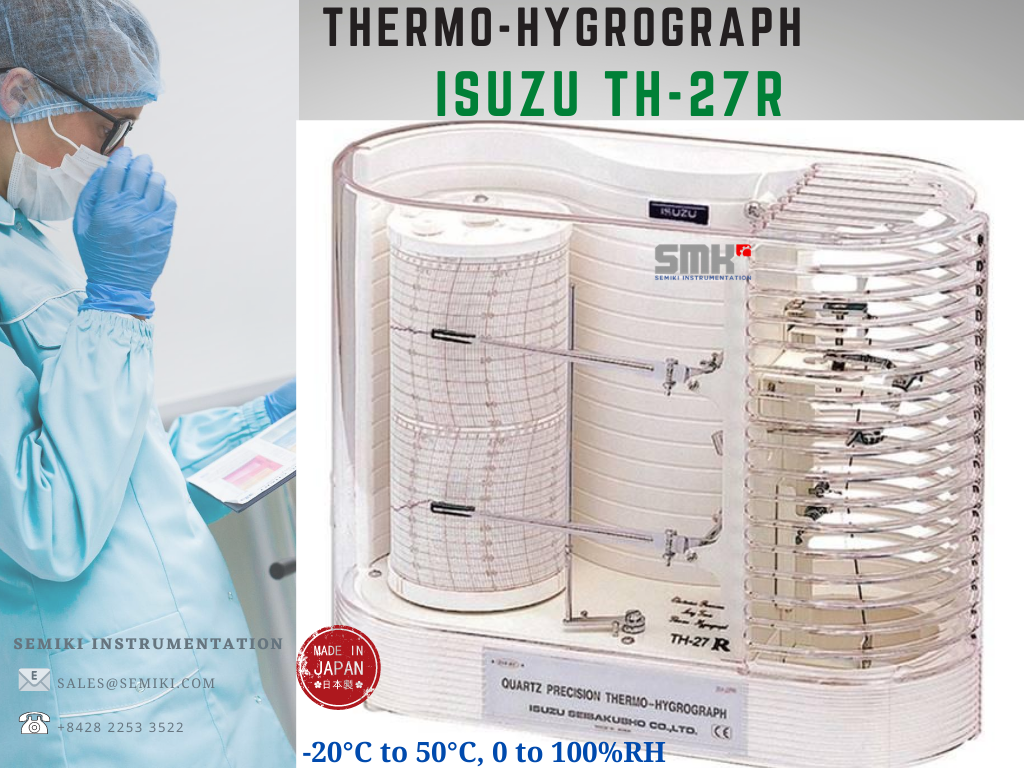
Self-recording thermometer and hygrometer
( Thermohygrograph Quartz type )

Temperature and humidity recorder
( Thermo-hygrometer / data logger)
♦ THE DIFFERENCE BETWEEN AUTOMATIC HYDROMETER (Thermohygrograph Quartz type) AND A TEMPERATURE AND HUMIDITY RECORDER (Hygrometer)
What is a self-recording thermometer and hygrometer?
– Self-recording thermometer and hygrometer is a type of device that can automatically record the temperature and humidity of the surrounding environment. The device includes 3 components: Temperature recorder, Temperature recorder, Temperature recorder pen.
– The thermometer and hygrometer records itself in real-time chart form for 7 days, 32 days and saves the value via chart paper.

fig.: Thermohygrometer SATO Japan Sigma II Thermohygrograph model 7210-00 ( -15 to 40°C / 0-100%RH )
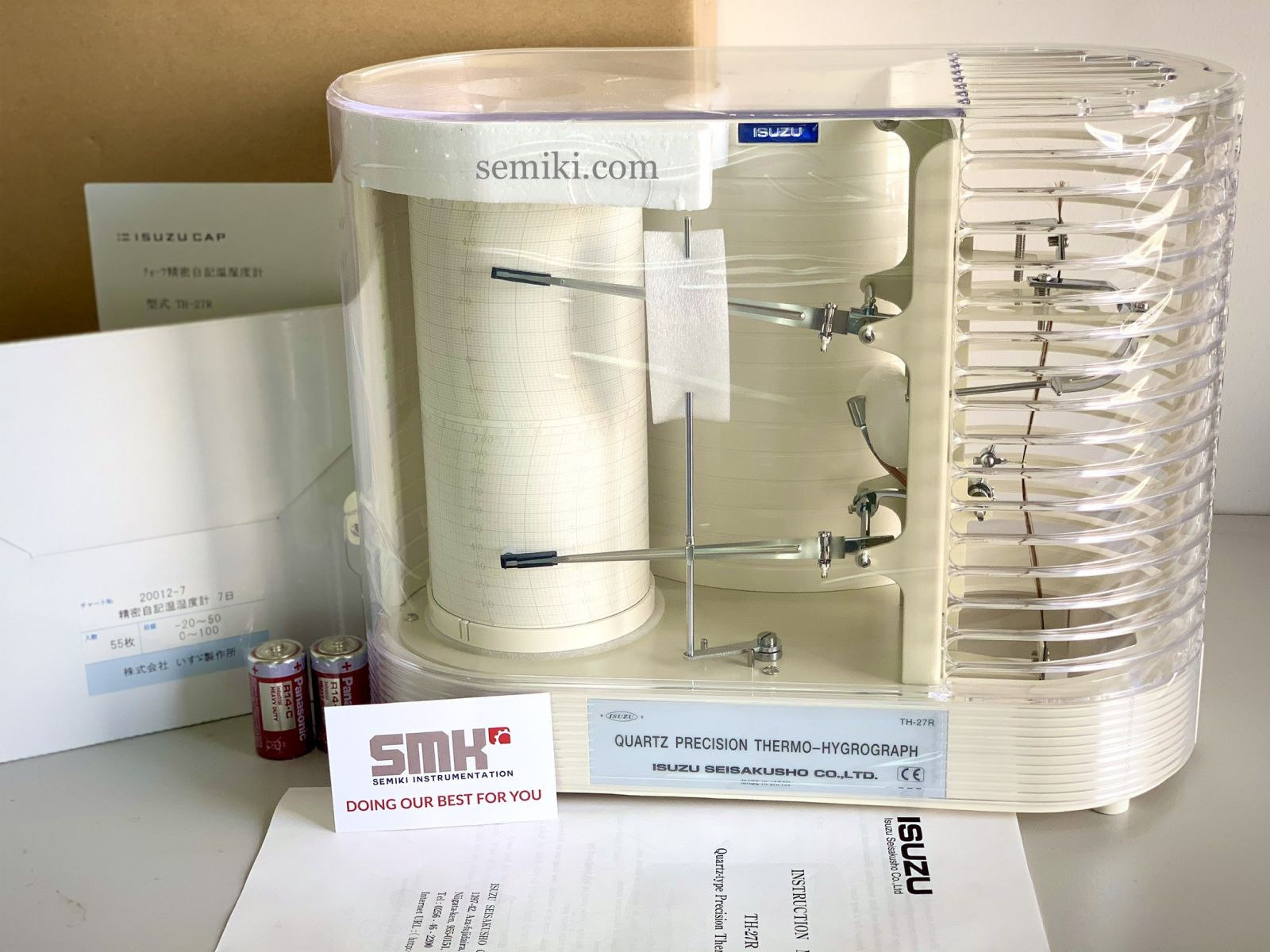
fig.: Thermohygrometer ISUZU Japan Thermohygrograph model TH-27R ( -20 to 50°C / 0-100%RH )
• Because the measurement data is saved on paper (chart), it has high "authenticity", helping to verify results clearly and independently.
Therefore, the self-recording thermometer and hygrometer can be used to measure temperature and humidity in laboratories, laboratories, calibration rooms...
Video: How to replace self-recording thermometer temperature paper | Sato Sigma II Thermohygrograph
Temperature and humidity recorder (Thermo-hygrometer / data logger)
• Thermo-hygrometer is a device capable of automatically recording the temperature and humidity of the surrounding environment.
• This type of device is integrated with a modern temperature and humidity recorder capable of recording and exporting data to a computer.
• Temperature and humidity recorders are widely used in measuring temperature and humidity in cold storage, factories, food warehouses...
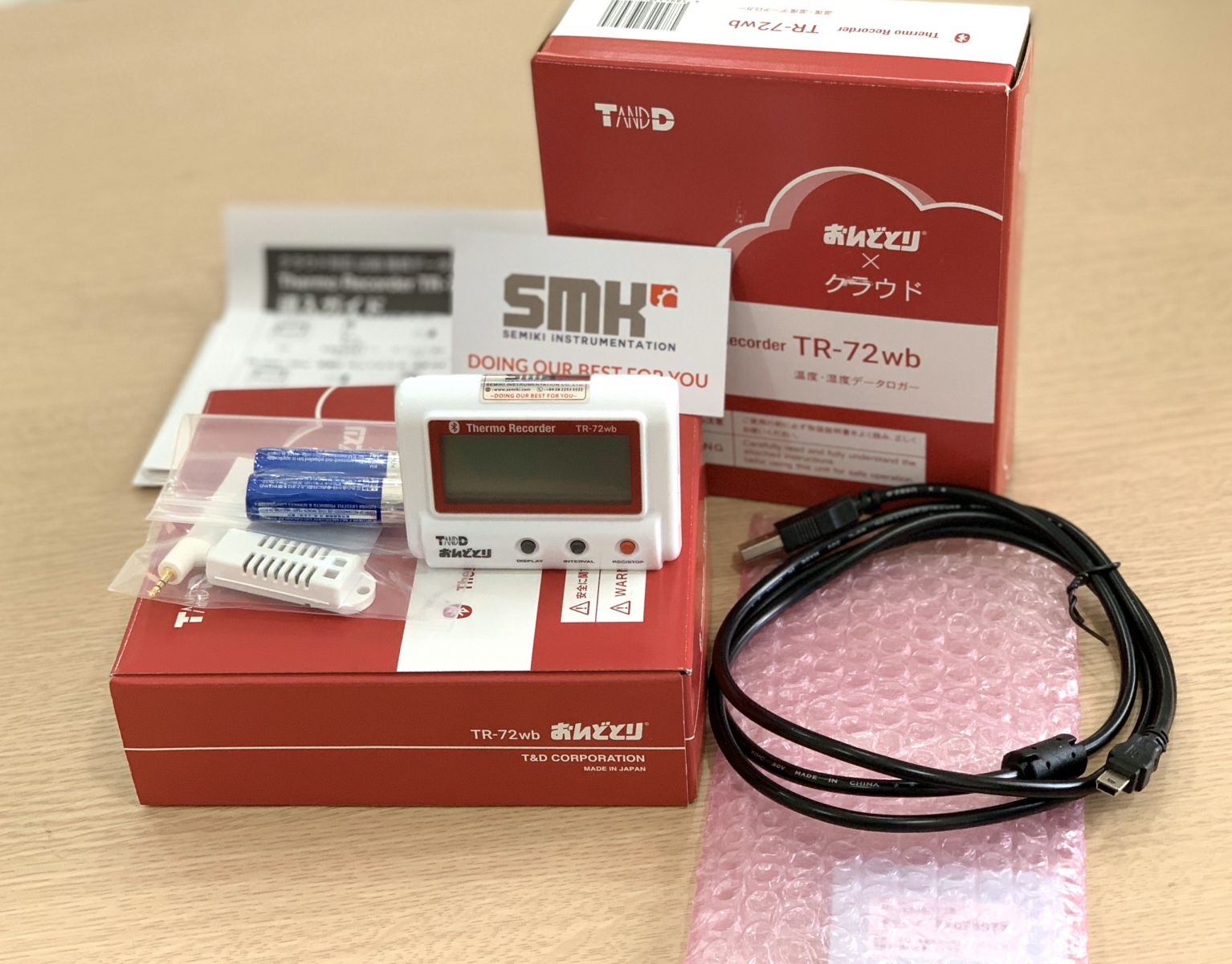
• The temperature and humidity recorder brings a lot of convenience to users because it can record and export temperature and humidity data to the computer for users to observe easily.
• With display via electronic screen, with internal memory to store results, export data to peripheral devices (computer, phone, printer); Therefore, electronic temperature and humidity recorders are widely used in controlling temperature and humidity in cold storages, quality management rooms, company offices, and households.
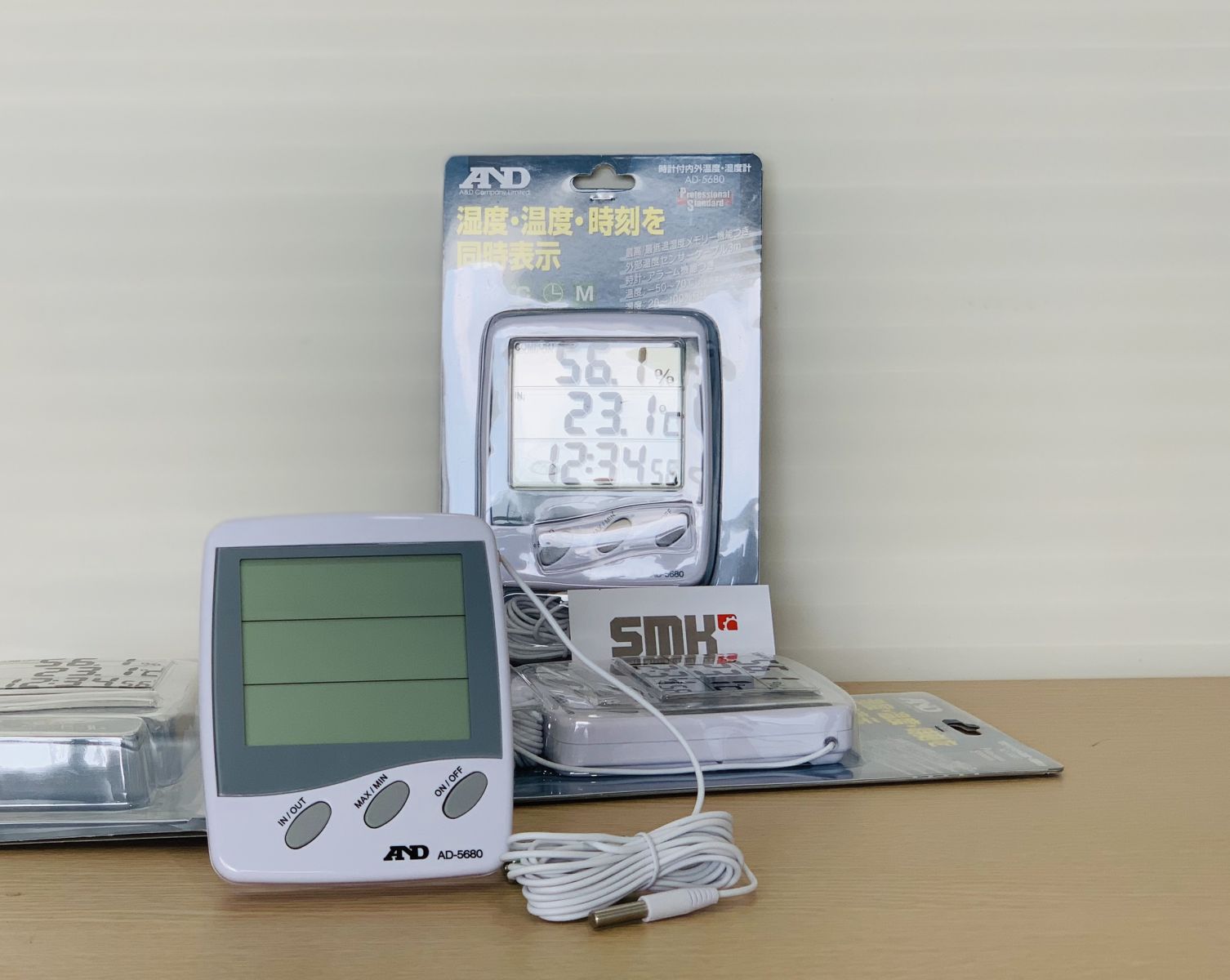
fig.: Temperature and humidity display set AND Japan Thermo-hygrometer model AD-5680 ( -10 to 50°C / 20-100%RH )
Suitable for displaying and checking temperature in meeting rooms, corporate offices, and family apartments.
– To monitor temperature and humidity in small areas, accuracy needs to be higher, we can use data loggers.
to analyze measured results, to evaluate quality products.

fig.: Temperature and humidity recorder and analyzer GRAPHTEC Japan data logger model GL240 (10 recording channels, optional probe)
Suitable for checking, analyzing and verifying temperature and humidity measuring devices such as temperature and humidity simulators (chambers), boilers, furnaces, dryers...
APPLICATION AND SELECTION OF A SELF-RECORDING THERMOMETER OR ELECTRONIC TEMPERATURE AND HUMIDITY RECORDER
► According to Semiki's analysis of two types of thermometers, both measure temperature and humidity; So what are the applications of these two types of thermometers?
– Depending on the purpose of use, we will choose: with a self-recording thermometer, it will record higher negative (-) and positive (+) temperatures than electronic temperature and humidity recorders. Results are stored directly on recording paper for high authenticity, so self-recording thermometers are used in environments and areas that require comparison between the user and the party who can independently refer to the results.
– The electronic temperature and humidity recorder has internal memory, so storing results via peripheral devices is highly convenient, without the extra cost of replacing paper and consumable recording pens like self-recording thermometers. , should be applied in internal control rather than authenticity between parties. The temperature and humidity recorder helps evaluate the area to be measured, through which we will identify and improve the measured environment.
→ The results of two types of thermometers may be the same, but the measuring purposes of the two devices may be different, so depending on the purpose of use, we will invest in a self-graphing thermometer or a temperature recorder. degree, electronic humidity.
When there is a need to consult on self-recording thermometers and electronic temperature and humidity measuring devices,
We need technical reference, please contact us:
SEMIKI MEASUREMENT EQUIPMENT COMPANY LIMITED
Phone: +84 28 2253 3522
Email: sales@semiki.com
Hotline: +84 9797 61016